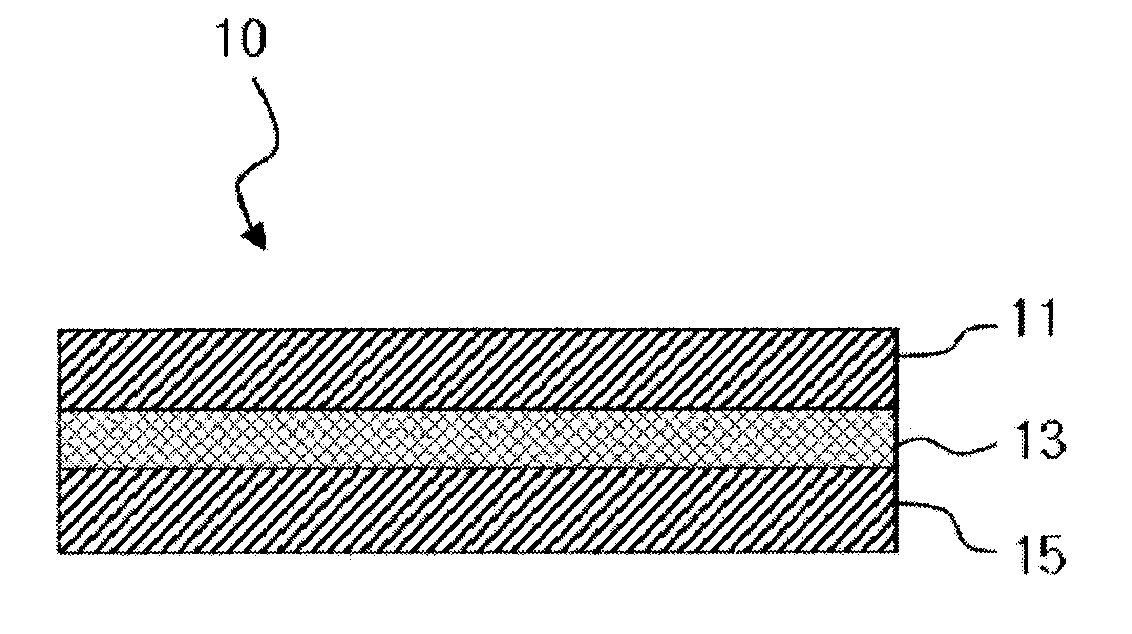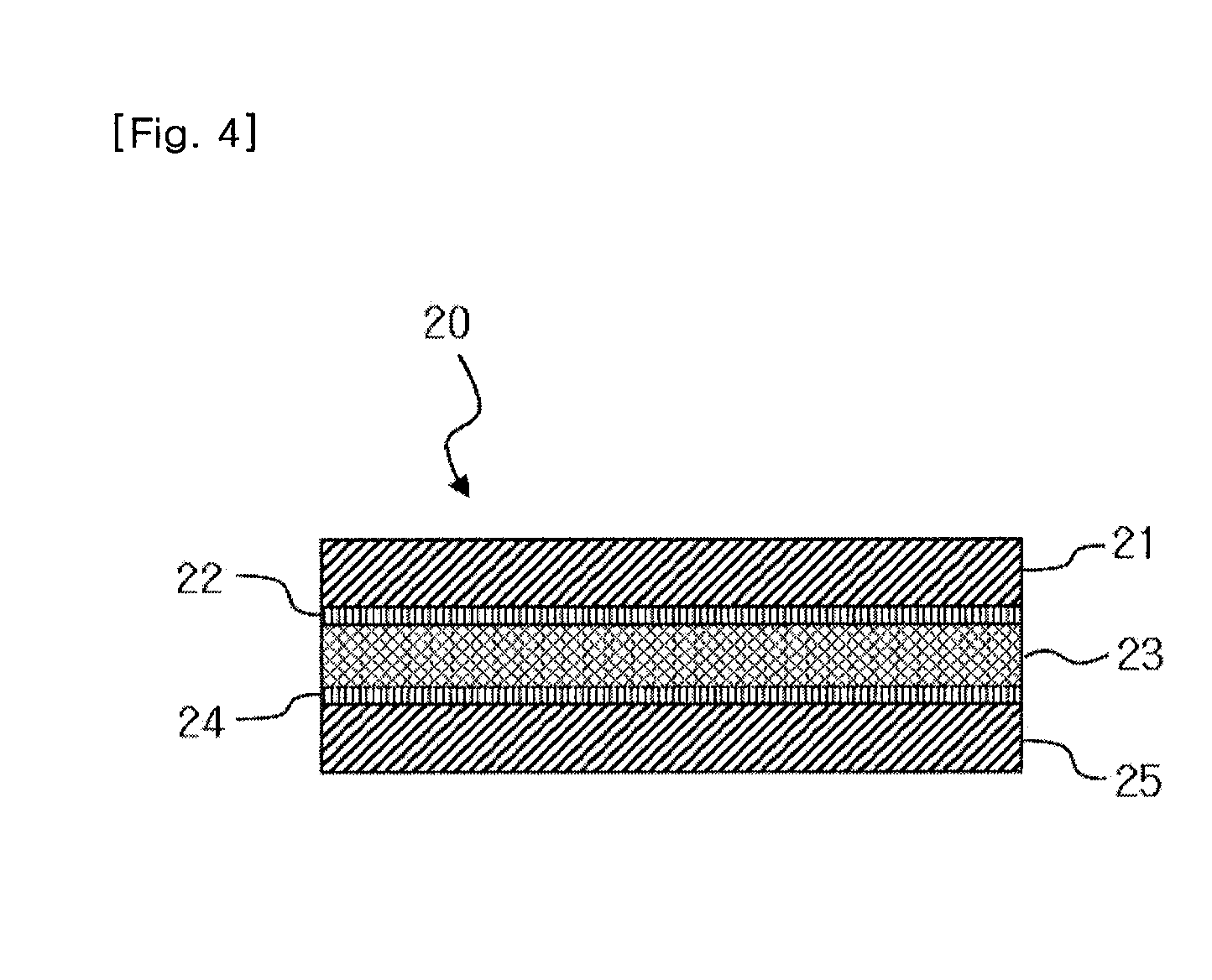Photochromic films and method for manufacturing the same
a technology of photochromic film and film surface, applied in the field of photochromic film, can solve the problems of poor transparency of films, inability to use as photochromic films for vehicles, and hindered vision at night or cloudy weather, etc., to achieve excellent transparency and durability, small thickness deviation, and small defects on the surface of films
- Summary
- Abstract
- Description
- Claims
- Application Information
AI Technical Summary
Benefits of technology
Problems solved by technology
Method used
Image
Examples
example 1
[0052]The gasket that is made of foamed PVC (polyvinyl chloride) that had the shrinkage of 20% showing the thickness change from 500 to 400 μm while it was cured under the vacuum compression was provided to the edges of two glass plates having the thickness of 3 mm. Next, after the photochromic composition (shrinkage ratio: 17%) that was made of the composition of the following Table 1 was filled between the glass plates, the curing started under the normal pressure condition at 25° C., its temperature was gradually increased for 4 hours to 100° C., it was maintained at 100° C. for 2 hours, and the temperature was reduced for 4 hours to 25° C. After the curing step, the thickness deviation of the film that was separated from the glass substrate and the gasket was within 5%, and the thickness was in the range of 395 to 410 μm. In addition, while the film was discolored, the optical density was less than 20% and the oxygen transmittance was 100 cc / m2·day·atm. The sample was exposed in...
example 2
[0053]The film was produced in the same manner as Example 1, except that foamed PE (polyethylene) that had the shrinkage ratio of 25% showing the thickness change from 400 to 300 μm under the vacuum compression in the curing was used as the gasket. After the curing step, the thickness deviation of the film that was separated from the glass substrate and the gasket was within 8%, and the thickness was in the range of 305 to 330 μm. In addition, while the film was discolored, the optical density was less than 20% and the oxygen transmittance was 100 cc / m2·day·atm. The sample was exposed in ATLAS UV 2000, an accelerated weathering tester, by using a UVA lamp under a condition of light intensity of 0.77 W / m2 at 340 nm and 60° C. for 8 hours during a cycle in which 4 hour condensation is repeated at 50° C. to measure an optical density and measure the time that is required to increase the transmittance at λmin to a half of the transmittance at an early discoloration step. As a result, th...
example 3
[0054]The film was produced in the same manner as Example 1, except that PE (polyethylene) that had the shrinkage ratio of 0.1% showing the thickness change from 300 to 299 μm under the vacuum compression in the curing was used as the gasket. After the curing step, the thickness deviation of the film that was separated from the glass substrate and the gasket was within 56%, and the thickness was in the range of 180 to 350 μm. In addition, while the film was discolored, the optical density was less than 22% and the oxygen transmittance was 100 cc / m2·day·atm. The sample was exposed in ATLAS UV 2000, an accelerated weathering tester, by using a UVA lamp under a condition of light intensity of 0.77 W / m2 at 340 nm and 60° C. for 8 hours during a cycle in which 4 hour condensation is repeated at 50° C. to measure an optical density and measure the time that is required to increase the transmittance at λmin to a half of the transmittance at an early discoloration step. As a result, the tim...
PUM
| Property | Measurement | Unit |
|---|---|---|
| transmittance | aaaaa | aaaaa |
| thickness | aaaaa | aaaaa |
| shrinkage ratio | aaaaa | aaaaa |
Abstract
Description
Claims
Application Information
 Login to View More
Login to View More - R&D
- Intellectual Property
- Life Sciences
- Materials
- Tech Scout
- Unparalleled Data Quality
- Higher Quality Content
- 60% Fewer Hallucinations
Browse by: Latest US Patents, China's latest patents, Technical Efficacy Thesaurus, Application Domain, Technology Topic, Popular Technical Reports.
© 2025 PatSnap. All rights reserved.Legal|Privacy policy|Modern Slavery Act Transparency Statement|Sitemap|About US| Contact US: help@patsnap.com



